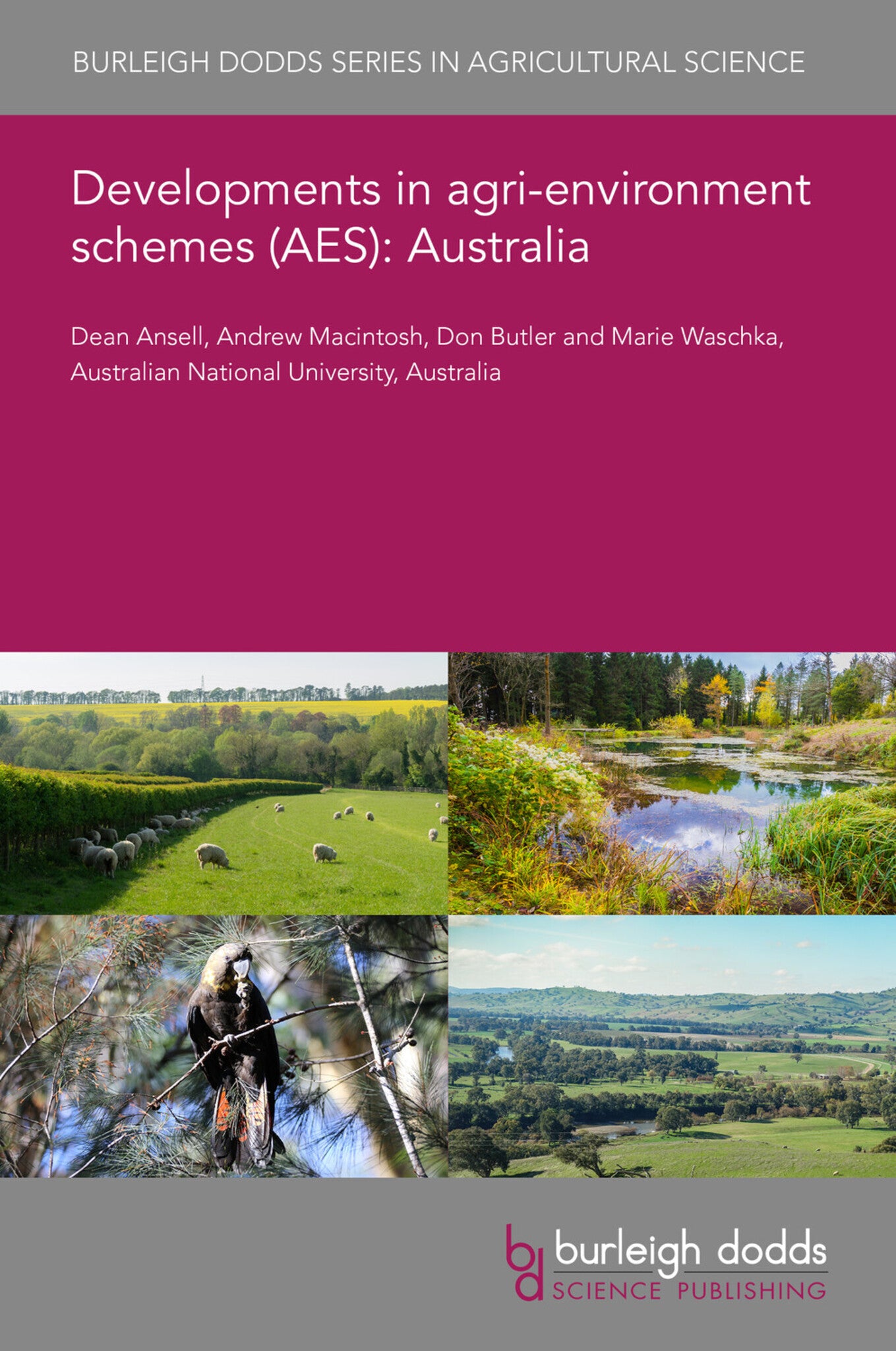We're sorry. An error has occurred
Please cancel or retry.
Developments in agri-environment schemes (AES): Australia

Some error occured while loading the Quick View. Please close the Quick View and try reloading the page.
Couldn't load pickup availability
- Format:
-
15 November 2024

This chapter explores the developments in agri-environment schemes in Australia. Agri-environment schemes have been a part of Australia’s environmental policy for more than two decades. During this time, schemes have evolved from community-based initiatives addressing land degradation issues, such as soil salinity and poor water quality, to the use of market-based mechanisms aimed at the restoration and protection of biodiversity values on farms. More recently, federal and state governments are increasingly designing schemes that integrate emerging carbon and nature markets in an attempt to make progress towards domestic and international emissions reduction and biodiversity targets, and to defray the cost of biodiversity conservation by attracting private investment. The authors provide examples of these schemes, including a case study on the federal government’s 'Carbon + Biodiversity Pilot' scheme, and discuss the various opportunities and risks associated with this shift in scheme design.

NATURE / Environmental Conservation & Protection, Biodiversity, NATURE / Ecosystems & Habitats / General, TECHNOLOGY & ENGINEERING / Agriculture / Sustainable Agriculture, TECHNOLOGY & ENGINEERING / Agriculture / Animal Husbandry, TECHNOLOGY & ENGINEERING / Agriculture / Agronomy / Crop Science, Restoration ecology / rewilding, Sustainable agriculture, Animal husbandry, Agronomy and crop production

- 1 Introduction
- 2 Agri-environment schemes and emerging environmental markets in Australia
- 3 Case study: the Australian Government's Carbon + Biodiversity Pilot
- 4 Future trends in research
- 5 Conclusion
- 6 Where to look for further information
- 7 References



